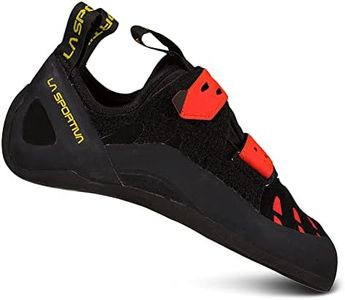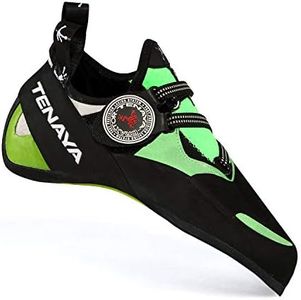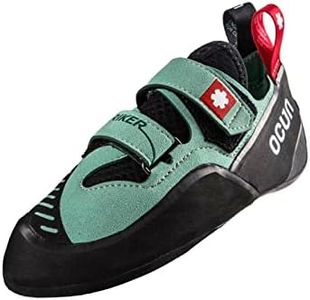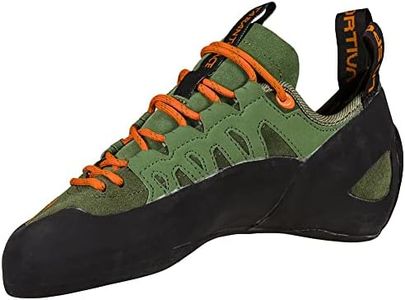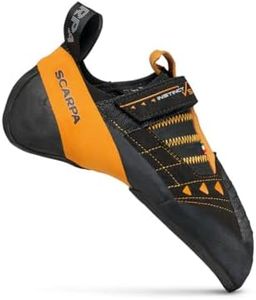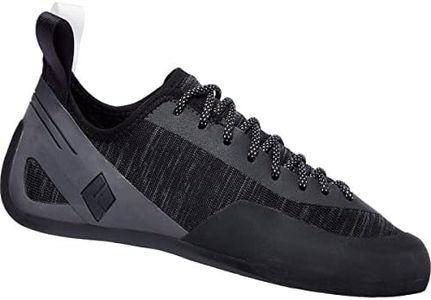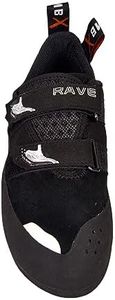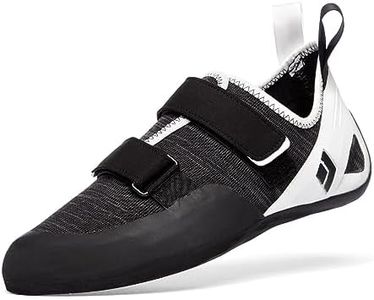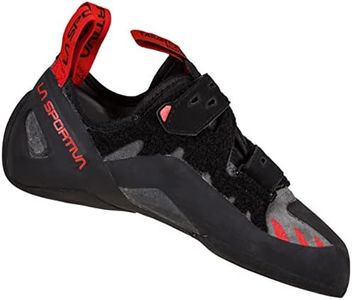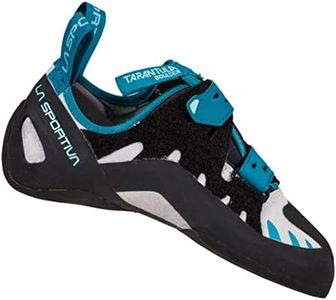We Use CookiesWe use cookies to enhance the security, performance,
functionality and for analytical and promotional activities. By continuing to browse this site you
are agreeing to our privacy policy
10 Best Bouldering Shoes
From leading brands and best sellers available on the web.By clicking on a link to a third party's website, log data is shared with that third party.
Buying Guide for the Best Bouldering Shoes
Choosing the right bouldering shoes can make a huge difference for your climbing experience. It's not just about picking the most expensive or fancy-looking pair; it's about finding shoes that fit your feet properly, match your climbing style, and help you progress while keeping you comfortable and safe. Before selecting a pair, it's helpful to try on different styles and think about how and where you'll be climbing, as well as your current skill level. Remember, a well-chosen shoe boosts both your performance and enjoyment while reducing the chance of injury.FitFit refers to how snugly and comfortably the shoe wraps around your foot. This is the most important aspect of bouldering shoes because a shoe that's too loose won't give you enough precision, while one that's too tight can cause pain or injury. Fit ranges from a relaxed, comfortable fit (often chosen by beginners or those wanting longer sessions) to an aggressive, tight fit for more experienced climbers seeking maximum sensitivity. When choosing fit, think about your pain tolerance, how long you plan to wear the shoes at a time, and whether you're prioritizing comfort or performance.
Closure SystemThe closure system refers to how you secure the shoes to your feet, such as laces, Velcro straps, or slip-on (elastic). Each system affects how quickly you can put on or take off the shoes and how precisely you can adjust the fit. Velcro is quick and easy, great for bouldering where you frequently remove your shoes. Laces offer the most precise fit but take longer to adjust, and slip-ons are fast but offer less customization. Choose based on your preference for ease versus adjustability.
DownturnDownturn is the curve of the shoe from heel to toe, indicating how much the shoe points downward. Flat shoes are meant for comfort and less aggressive climbs, making them suitable for beginners or longer sessions. Moderately downturned shoes offer a balance of comfort and performance. Aggressively downturned shoes help you hook onto small edges and overhangs but can feel uncomfortable for longer wear. Picking the right downturn depends largely on your climbing style—steeper routes and overhangs benefit from more aggressive shoes, whereas slab and vertical climbing are better with flatter shoes.
Sole ThicknessSole thickness refers to how thick the rubber sole is. Thicker soles (around 4-5mm) generally last longer, provide more support, and are favored by beginners who need durability and less sensitivity. Thinner soles (3-4mm or less) give you more 'feel' for the rock, improving precision but wearing out faster. Choose a thinner sole if you're looking for sensitivity for complex footwork and a thicker sole if you want something that will last as you learn.
Rubber TypeRubber type describes the specific rubber used for the sole and its stickiness and durability. Softer rubbers are grippier and provide more sensitivity, ideal for technical climbs, but they wear out quicker. Harder rubbers are more durable and stable, making them better for all-day comfort or outdoor climbing on rough rock. Your pick should be guided by how much you prioritize grip (for hard, technical problems) versus durability (for long training sessions or outdoor use).
Heel and Toe FeaturesHeel and toe features refer to how the shoe is constructed around the heel and toe areas—some shoes have extra rubber or special shapes to help with toe-hooks and heel-hooks, which are specific climbing moves. Basic shoes have simpler constructions and are suitable for beginners, while shoes designed for advanced climbers may have reinforced or shaped areas for better hooking performance. If you plan to advance to more technical climbs, or already use heel and toe hooks frequently, pay attention to these features.
Upper MaterialUpper material is what the top part of the shoe is made from and can be leather, synthetic, or a mix. Leather tends to stretch and mold to your foot over time, giving a custom fit, but may become looser. Synthetic materials keep their shape better but won't stretch as much. If you want a shoe that changes shape with your foot, leather is preferable; if you want a shoe that stays true to its original fit, synthetic is best.

